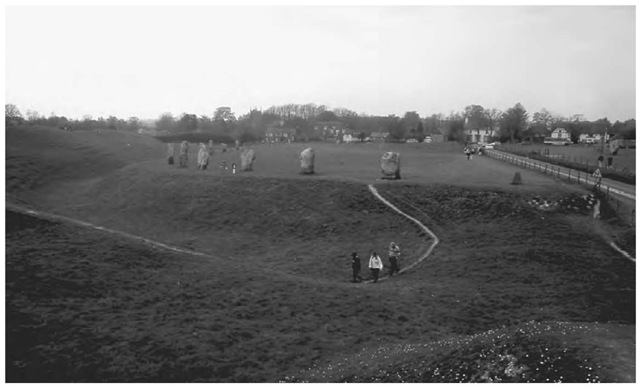Situated in Wiltshire, England, a few kilometers south of the modern town of Swindon, Avebury is one of the largest and most impressive Later Neolithic henge monuments in Britain. Built around the middle of the third millennium b.c.e., it measures some 350 meters (1,150 feet) across and surrounds an entire modern village. The outer ditch and bank, when first constructed, were some 9 meters (30 feet) deep and 8 meters (25 feet) high, respectively, and it is estimated that almost a hundred stones encircled the interior. There were also two inner circles, each around 100 meters (300 feet) in diameter. At the center of the northernmost of these was a configuration of three massive stones arranged like three of the four sides of a huge rectangular box, known as the Cove. Running away from two of the four entrances of the henge, to the west and south, were two long stone avenues. Much of the first 800 meters (half mile) of the latter (the Kennet Avenue) survives, but it originally ran for over 2.3 kilometers (1.5 miles), connecting Avebury to a site whose construction had commenced many centuries earlier: a set of concentric timber circles (possibly a roofed building) later replaced by two circles of small stones, known as the Sanctuary.
Surprisingly, given the obvious importance of the monumental landscape in and around Avebury in Later Neolithic times, few astronomical alignments have ever been claimed here. Alexander Thom’s only interest in the site was geometrical. The British archaeologist Aubrey Burl has suggested that the Cove was aligned upon the most northerly rising position of the moon, but the few other known examples of coves show no astronomical consistency.
Part of the great henge and stone circles at Avebury, Wiltshire, England.

